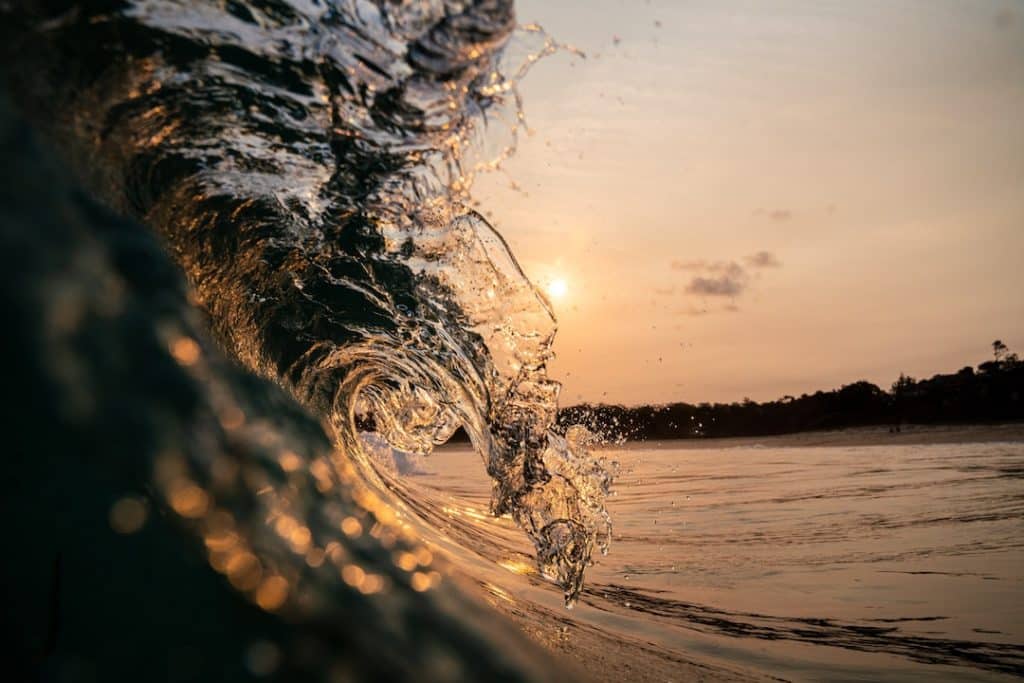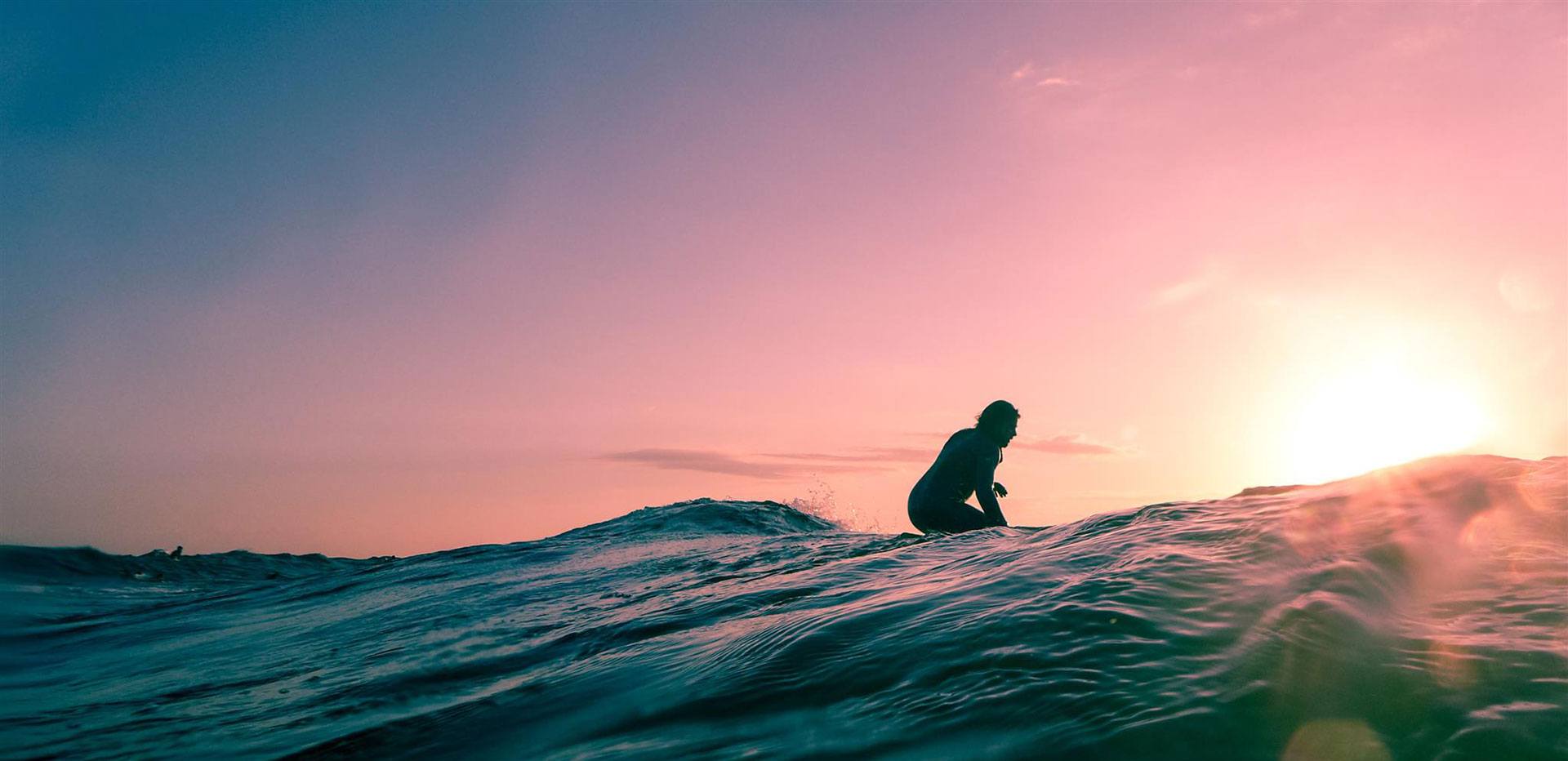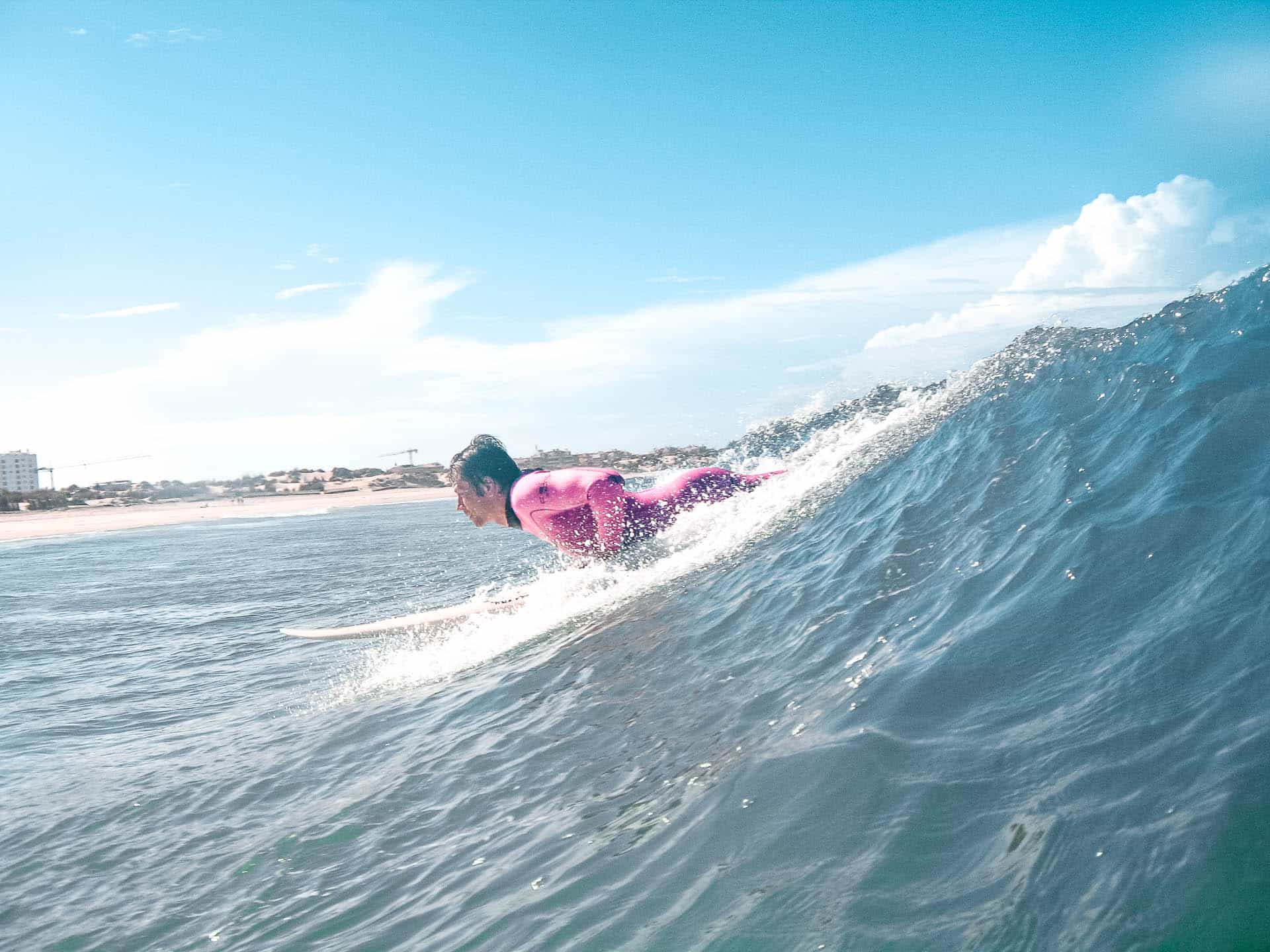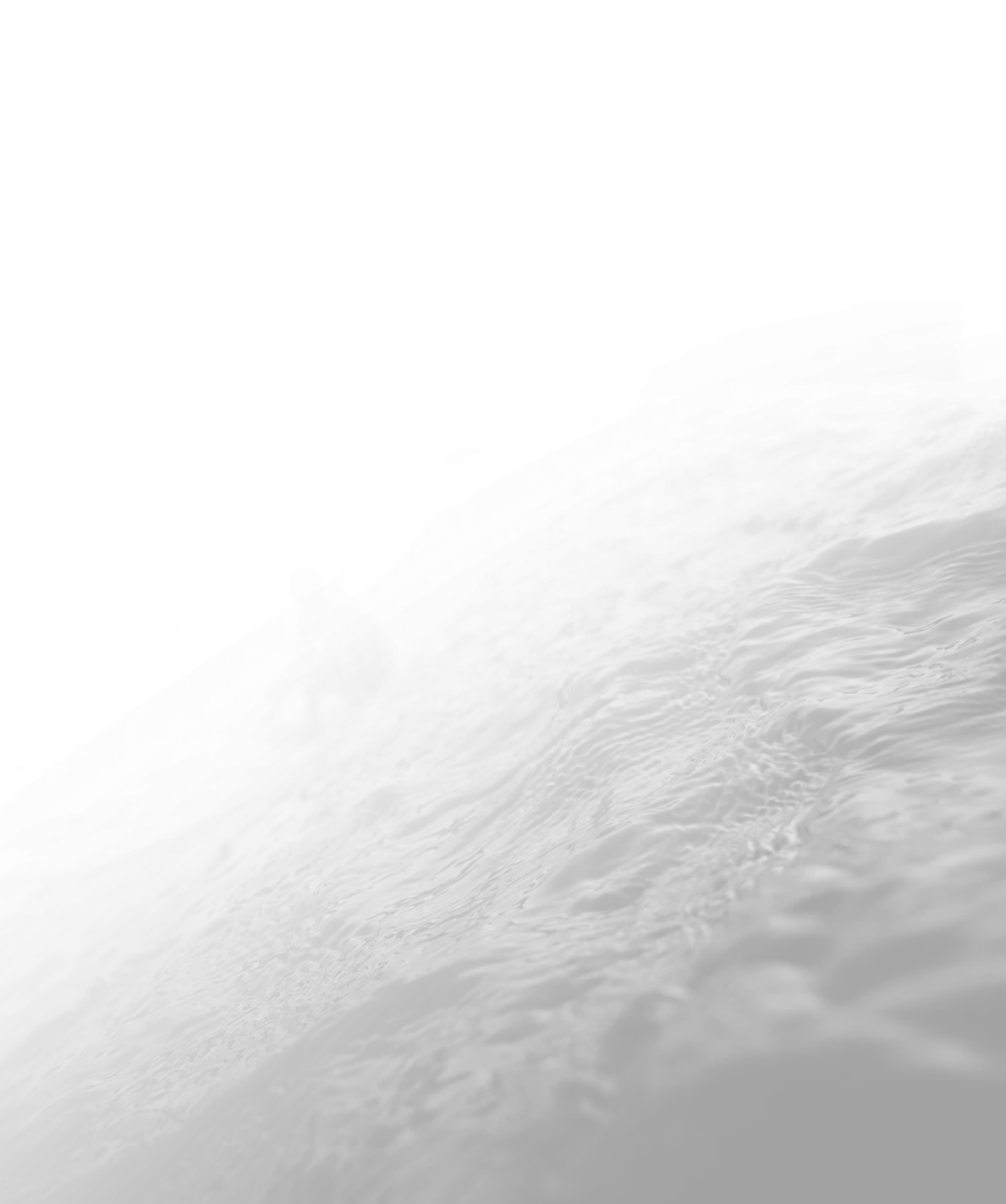It’s said that the waves in Nicaragua are always offshore, but is this just another saltwater fable or an established fact? We uncover the truth about the surf conditions in The Land of Lakes and Volcanoes surf conditions and explain why it’s still one of the best destinations to learn to surf in the world.
If you’ve ever told another surfer that you plan on learning to surf in Nicaragua, they’ve no doubt exclaimed with wild eyes and flailing arms that this charming Central American country is nothing short of a wave riding nirvana.
Ruggedly beautiful with a laidback vibe, premium quality waves for all skill levels and an affordable cost of living combine to make it appealing for backpackers and surf seekers the world over. And although it’s received some bad press lately, the truth is that Nicaragua continues to be one of the best learn to surf destinations in the world.
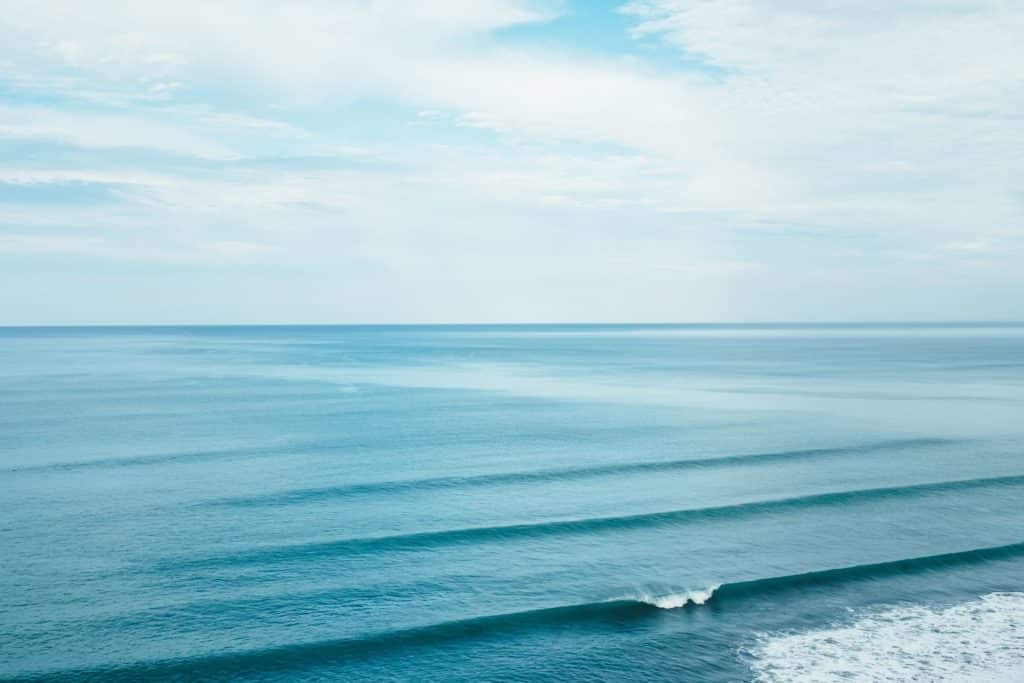
Why is it so popular amongst beginner surfers?
In addition to the awesome atmosphere and its huge variety of surf spots, there’s one overarching reason why so many people choose to learn to surf in Nicaragua… it’s winds.
In case you weren’t aware, Nicaragua is known as a beginner surfers’ playground due to its topography and a meteorological phenomenon known as “the lake effect”, which essentially ensures the country’s wave-rich Pacific coastline is treated to offshore winds for a whopping 300 plus days of the year. Crazy, but true!
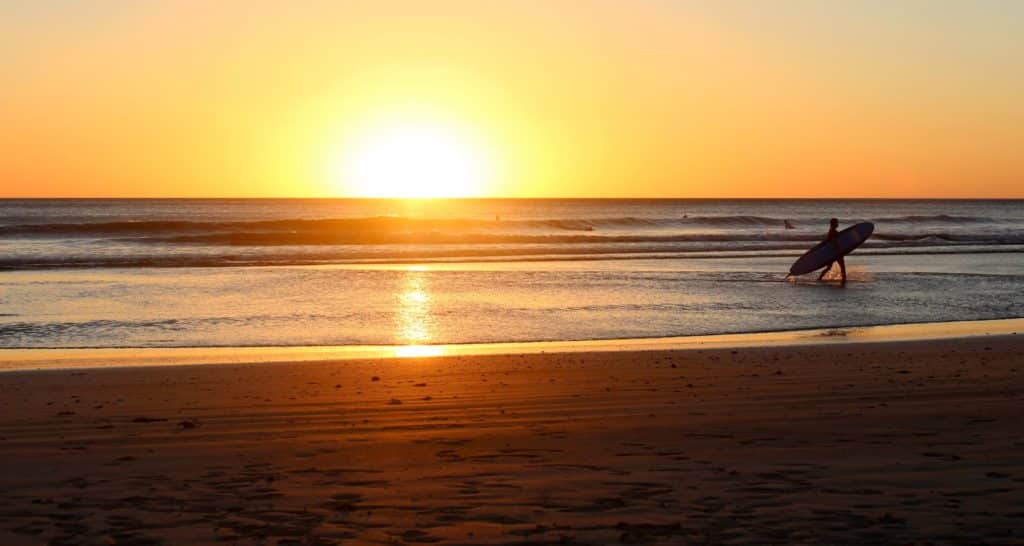
How is this possible?
Nicaragua is home to two expansive inland bodies of water: Lake Managua with the country’s capital city on its southwest shore and Lake Nicaragua, the largest lake in Central America and the 19th largest in the world.
These lakes create two separate breaks in a chain of mountain ranges that run from North America into South America and West Antarctica, known as the American Cordillera. The breaks then act as funnels for the Caribbean northeasterly trade wind to blow through, ensuring the waves in Nicaragua are always offshore at its southwest facing beaches.
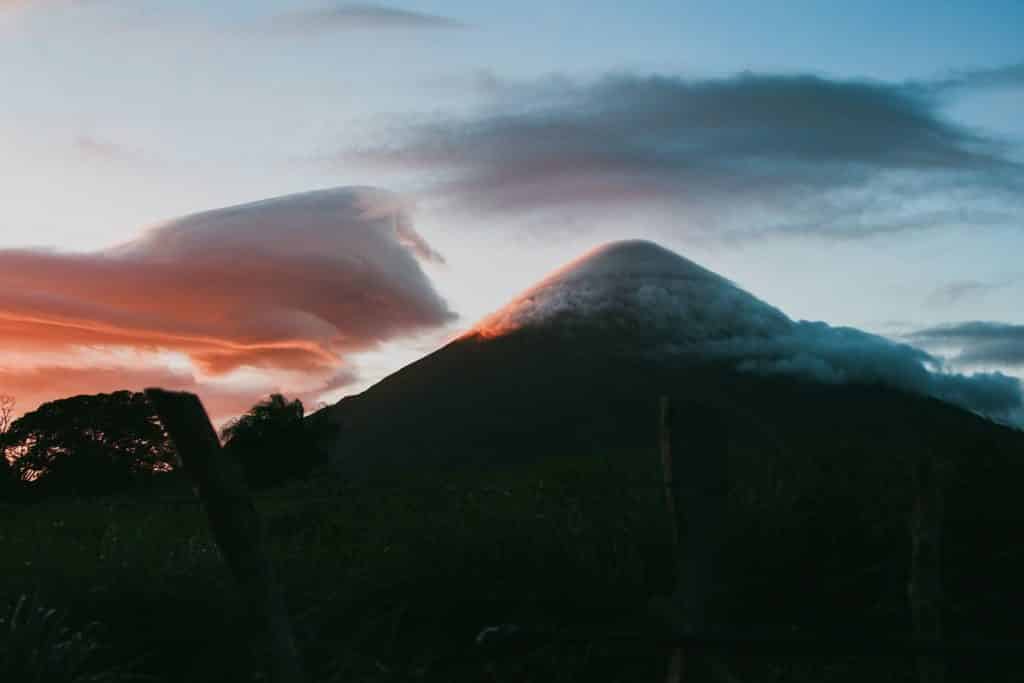
Why does that matter though?
It’s a fair question, especially if you’re only just beginning your foray into the world of surfing. But let us tell you right now that surfers travel countless miles because the waves in Nicaragua are always offshore.
That’s because offshore waves have the power to make us drop everything and run for the beach. Forgoing whatever we’re doing at that moment for the sake of getting in the water as quickly as possible. These winds groom the waves and make them easier for you to ride once you start going across the face.
Offshore winds also hold a wave up from breaking, which makes them a contributing factor in determining whether or not a wave will barrel. And given that getting barrelled is deemed to be the ultimate highpoint when it comes to surfing, it’s pretty clear why regular offshore winds are so desirable.
In fact, many learn to surf destinations around the world are lucky to have more than a couple of months’ worth of offshore winds over the space of a year. So having almost 12 months of wind blowing offshore sounds more like the stuff of myth and legend, rather than a reality.
As an added benefit, offshore winds tend to make beaches look undoubtedly more inviting. As opposed to the days when onshore winds blow into the back of the waves, making them crumble and creating choppy waters. If you look at any surf magazine or surf movie, you’ll notice the overwhelming amount of surfing is performed in offshore winds for these reasons.
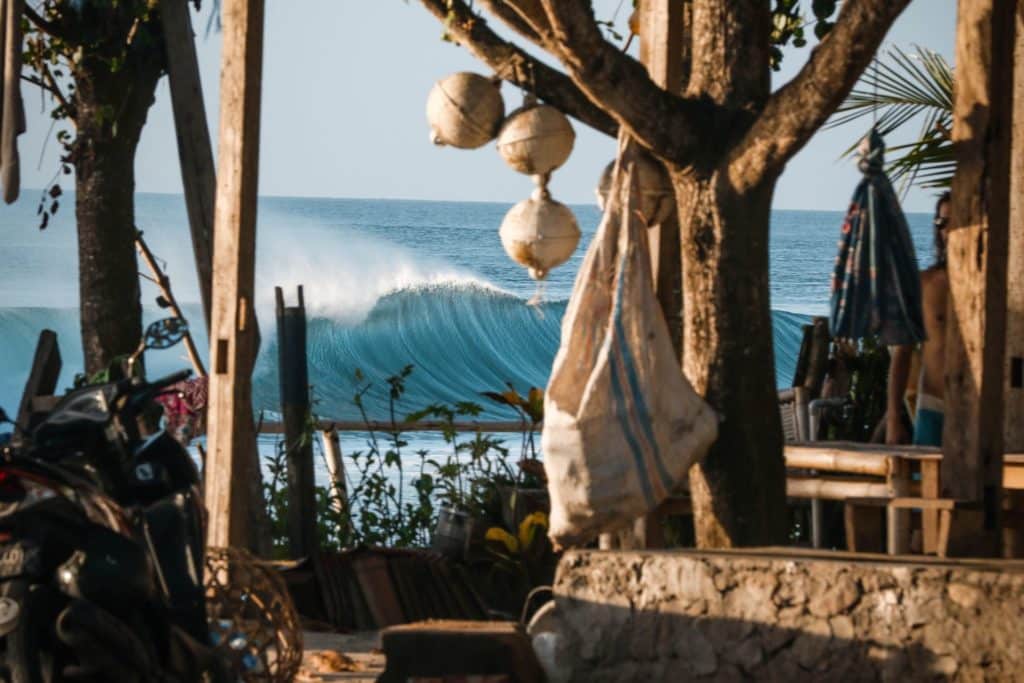
How strong do these winds get?
While it’s true that the waves in Nicaragua are always offshore, it can get to a point when the wind is gusting too hard. Making it a bit of a struggle to keep the spray out of your face and paddle into a wave.
Luckily for you though the winds in Nicaragua never get too strong, and even when they do it is only intermittently. As is the case with Papagayo Jet or Papagayo Wind, which is a powerful but only very occasional flow of air that blows from the Caribbean to the Pacific through the same pass in the American Cordilleras that the trade winds follow.
These winds can reach speeds of 110 kilometers per hour, but they only occur sporadically every few weeks, and even then, they only last a couple of days. For most of the year, the average trade winds will blow at a breezy 25 kilometers per hour max and deliver premium conditions for surfers of all skill levels. Blowing onshore for less than a couple of weeks in total.
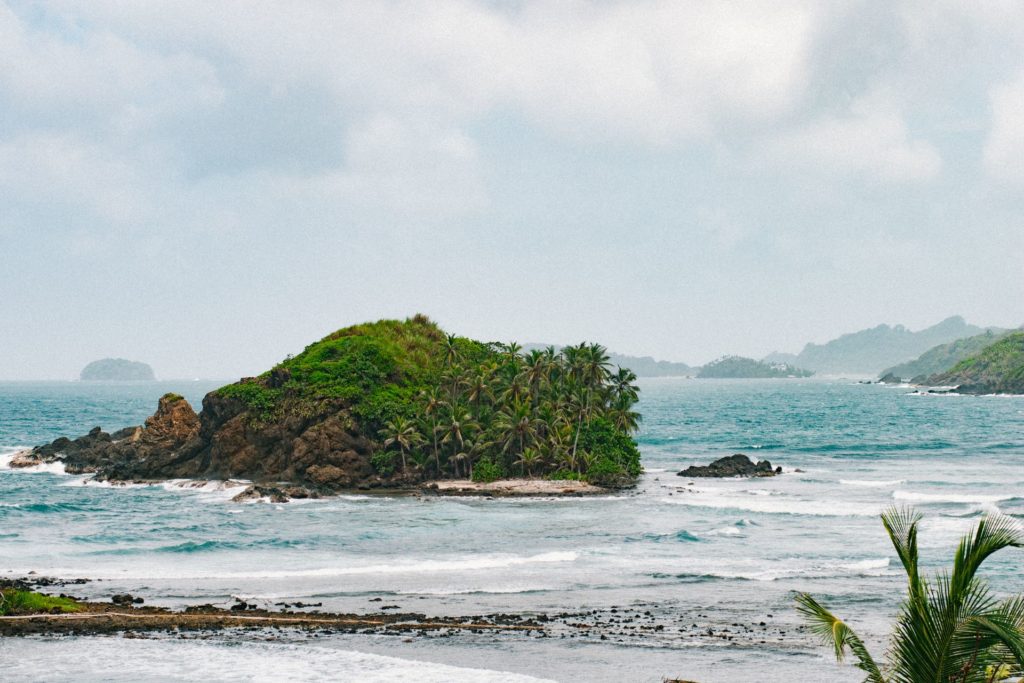
What are some other reasons to surf in Nicaragua?
Nicaragua is a special country in the sense that it offers beginner surfers the complete package. From its fascinating culture to the warm people and stunning beaches, there really is something for everyone to enjoy.
But here at Rapture Surfcamps, we know you’ve come for the waves. So if you want to get the most out of your surfing experience, you can’t go past Nicaragua when it comes to consistent swell and quality winds. Both of which will ensure you spend the maximum amount of time catching waves and perfecting your technique.
The vast majority of Nicaragua’s best spots are also sand bottom, which is ideal if you’re just learning to surf and are concerned about coming into contact with reefs or rocks. With the added confidence you get from knowing that you’re surfing on sand helping you to progress quickly.
If it’s sunny days and tropical temperatures that you crave though then you’ll be pleased to know Nicaragua receives a lot of sunshine. Especially during the months of December to July, which are more or less the dry season. During this timeframe, the waves are also much smaller, which is awesome if you’re only just learning to surf.

Cost of living, the friendly vibe and the fact that you can meet people from all over the world in what is essentially a melting pot for other young travelers make Nicaragua one of the best learn to surf destinations in the world. All that’s left is for you to book your trip today to start experiencing everything The Land of Lakes and Volcanoes has to offer.
